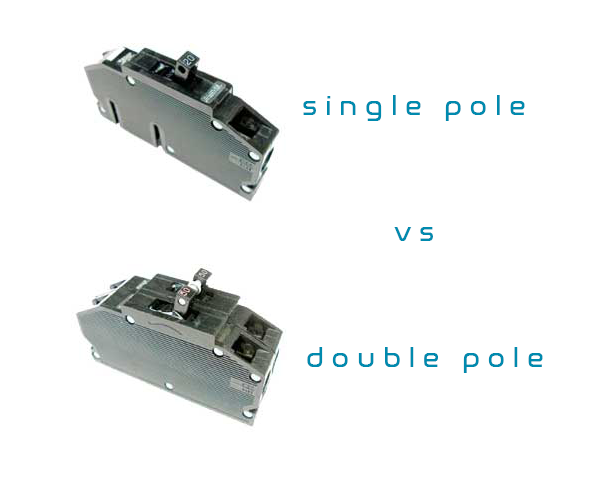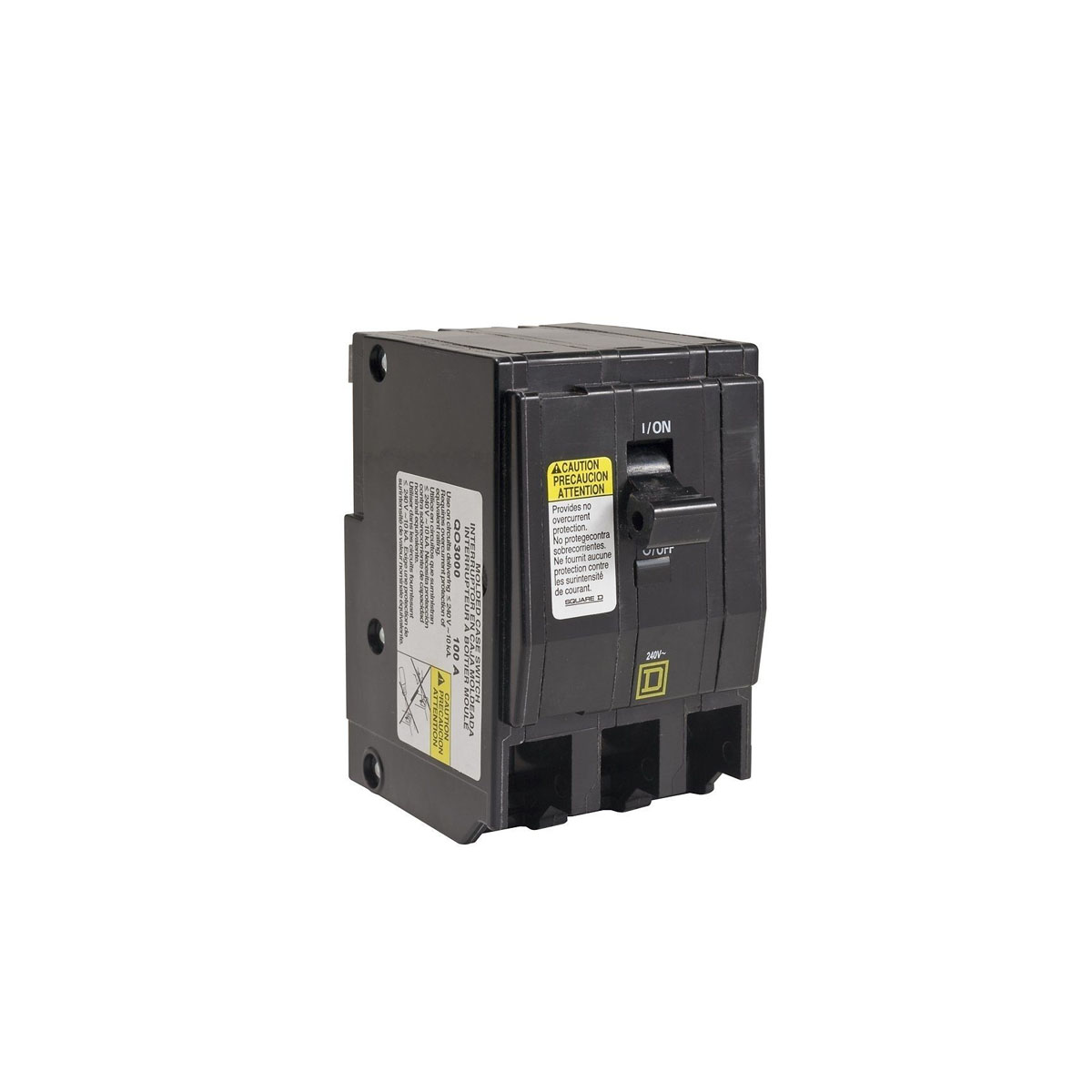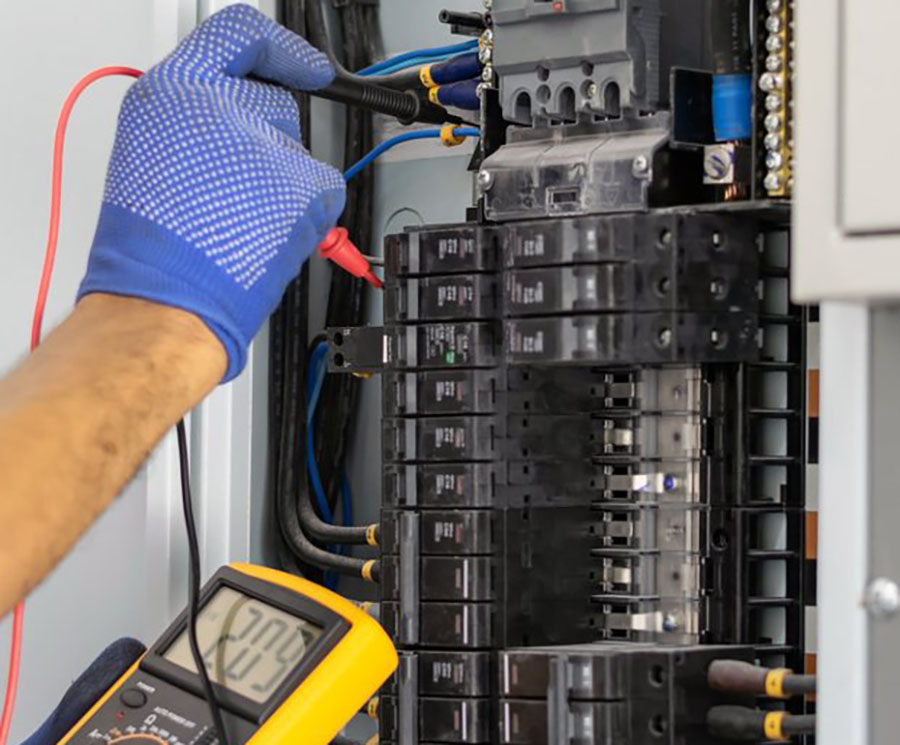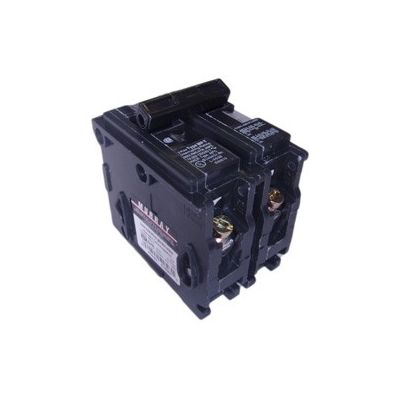Double-Pole vs. Single-Pole Breaker
The main difference between double and single-pole breakers is:
- The voltage
- The amperes they provide
- Their physical size
Both fit in standard electrical panels, but double-pole breakers are twice the width of single-pole breakers.
This guide covers all the features and fundamental differences between the two types of breakers, including when and where you should use them. So keep reading to learn everything you need to know about single vs. double-pole breakers.
What is a Single Pole Breaker?
A single-pole breaker protects an electrical circuit from overloading or short-circuiting. It consists of a switch that can open or close to break the circuit and a trip sensor that will open the breaker if the current in the circuit exceeds a certain threshold.
Single-pole breakers provide 120 volts and 15-20 amps. They are less expensive and are typically used to protect small appliances such as lights and televisions.
What is a Double Pole Breaker?
A double-pole is a circuit breaker that protects two electrical circuits from overloading or short-circuiting. It has two switches that can open or close to break the circuit and a trip sensor that opens the breaker if the current in either of the circuits exceeds a certain threshold.
Double-pole breakers provide 240 volts and 20-60 amps—the voltage required to power most appliances. They are usually used to protect larger appliances such as air conditioners, water heaters, and dryers.
Double-Pole vs. Single-Pole: The Difference is Easy & Clear
Now that you understand the basics of single and double-pole circuit breakers let's compare and contrast the two.
If you look inside the electrical panel in a home or business, you can quickly identify a single-pole breaker. They are usually the smaller circuit breakers, with one screw or lug on each end that attaches it to the bus bar. Alternatively, a double-pole breaker is twice as wide as a single-pole breaker and has two screws or lugs on each end that connect it to the broader bus bar.
But, the main difference between single-pole and double-pole circuit breakers is the voltage they provide and the amount of current they can handle. A single-pole breaker provides 120 volts and is typically used to protect small appliances such as TVs, computers, lamps, etc. And a double-pole breaker provides 240 volts and is usually wired to larger appliances such as air conditioners, water heaters, refrigerators, and dryers.
Where Are Single-Pole Breakers Used?
Single-pole breakers are mainly used in residential applications to protect small appliances and lights. However, they are also used in commercial applications to power computers, copiers, and printers.
Where Are Double-Pole Breakers Used?
Double-pole breakers are mainly used in industrial and commercial applications to power large appliances such as air conditioners, water heaters, and dryers. However, they are also used in some residential applications to provide 240 volts for clothes dryers, stoves, and ovens.
How to Choose the Right Circuit Breaker
When choosing a circuit breaker, you need to consider the voltage and current rating of the appliance or electrical circuit you are trying to protect. You also need to consider the type of breaker that best meets your needs.
A single-pole breaker will suffice if you are only concerned with protecting an appliance or electrical circuit from overloads and short circuits. However, a double-pole breaker is required if you need to provide 240 volts for an appliance or circuit.
Double-check compatibility when replacing breakers.
When replacing a circuit breaker, it’s essential to check that the new breaker is compatible with your electrical panel. Most single-pole breakers will fit in any standard 120-volt electrical panel, but double-pole breakers are not always interchangeable. You will also need enough space in the panel for the new breaker, with a single-pole requiring one slot and a double-pole requiring two.
Many brands make single and double-pole circuit breakers compatible with most electrical panels. However, it is always a good idea to check with the manufacturer of your electrical panel to be sure.
Be Careful of the Amperage
The amperage rating of a circuit breaker is critical. If the circuit breaker is not rated for the correct amperage, it could fail to trip and allow too much current to flow through the circuit. This can be dangerous with the potential to cause an electrical fire.
When in doubt, it is always best to consult a licensed electrician to help you choose the correct circuit breaker for your needs, especially if you’re replacing one that's failed.
Bottom Line
The main difference between single and double-pole circuit breakers is their voltage. Single-pole breakers provide 120 volts and are typically used to protect small appliances. Alternatively, double-pole breakers provide 240 volts and are usually used to protect larger appliances.
Choose the breaker that best meets the needs of the appliance or circuit you are trying to power and protect.




